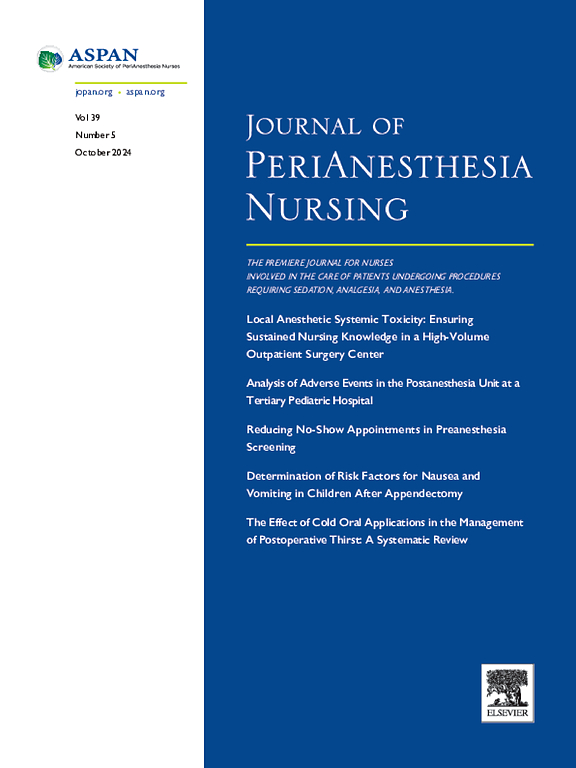缩小教育差距:超声引导下的外周静脉注射。
IF 1.6
4区 医学
Q2 NURSING
引用次数: 0
摘要
目的:为麻醉服务提供者提供超声(US)教育,以提高困难静脉通路患者外周血管(IV)插管的使用率:设计:该项目是一个定性描述性质量改进项目,对结果进行了测量。该项目中的数据包括在提供教育和培训之前和之后,提供者在美国调查中的总体知识和能力得分:方法:通过医院的在线平台为 38 名注册麻醉师(CRNA)制作并提供了一个演示文稿。接下来,进行了现场模拟,以促进 US 的使用技能。每位参与模拟的注册麻醉师都成功地掌握了这一技能。通过自动数据收集软件进行李克特量表调查,收集教育捆绑的影响和成功率:38 名参与者中有 17 人(45%)对调查做出了回应。在这些回复者中,88% 的医疗服务提供者表示,干预后他们的 US 技能和信心有所提高,100% 的参与者表示干预有助于学习 US 引导下的外周静脉插入:结论:教育和实践技能课程增强了医疗服务提供者使用 US 的信心。虽然该项目侧重于对急诊麻醉师的教育培训,但它适用于所有负责静脉插管的医疗服务提供者。项目组成员将传播这些研究结果,并计划提高围手术期护士对 US 引导外周静脉插入的信心,从而提高手术环境的效率。本文章由计算机程序翻译,如有差异,请以英文原文为准。
Bridging an Education Gap: Ultrasound-guided Peripheral IVs
Purpose
To provide ultrasound (US) education to anesthesia providers to increase usage for peripheral intravascular (IV) cannulation on difficult IV access patients.
Design
This project reflects a qualitative descriptive quality improvement project with outcomes measured. Data in this project include the overall knowledge and competency scores from the provider’s US survey before and after education and training were provided.
Methods
A presentation was developed and provided to 38 certified registered nurse anesthetists (CRNA) via the hospital’s online platform. Next, in-person simulations were conducted to facilitate the skills of US utilization. Each CRNA participating in simulations successfully performed the skill. The impact and success of the education bundle were collected via the disbursement of a Likert-scale survey via an automated data collection software.
Findings
Seventeen of the 38 (45%) participants responded to the survey. Of these respondents, 88% of providers indicated that their US skills and confidence had increased following the intervention, and 100% of participants stated that the intervention was helpful in learning US-guided peripheral IV insertion.
Conclusions
Education and hands-on skills sessions increased provider confidence in US use. While this project focused on educational training of CRNAs, this is applicable to all health care providers who are responsible for IV cannulation. The project team members will disseminate these findings and plan to improve perioperative nurses’ confidence in US-guided peripheral IV insertions; thus, improving efficiency in the operative setting.
求助全文
通过发布文献求助,成功后即可免费获取论文全文。
去求助
来源期刊

Journal of Perianesthesia Nursing
NURSING-
CiteScore
2.20
自引率
17.60%
发文量
279
审稿时长
90 days
期刊介绍:
The Journal of PeriAnesthesia Nursing provides original, peer-reviewed research for a primary audience that includes nurses in perianesthesia settings, including ambulatory surgery, preadmission testing, postanesthesia care (Phases I and II), extended observation, and pain management. The Journal provides a forum for sharing professional knowledge and experience relating to management, ethics, legislation, research, and other aspects of perianesthesia nursing.
 求助内容:
求助内容: 应助结果提醒方式:
应助结果提醒方式:


